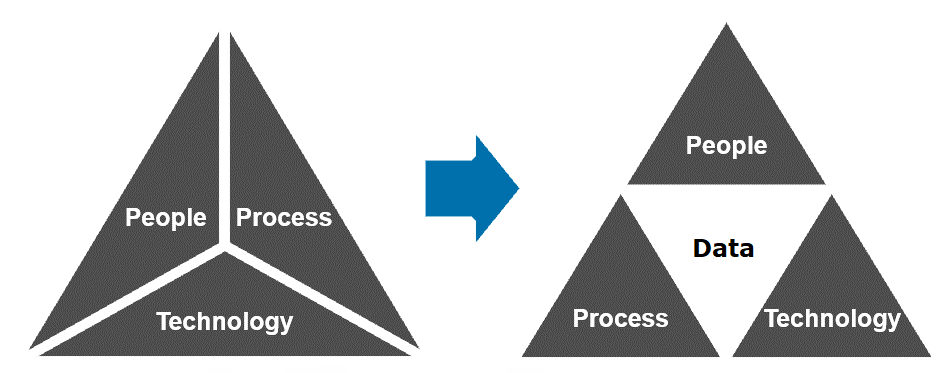Data-driven versus intuitive leadership ‒ which offers a decision-making advantage?
Blog: Capgemini CTO Blog
With the science of data analytics becoming more sophisticated by the day, one area evolving in parallel is decision making. Previously, leadership decisions tended to be a balanced play between available information and instinct. However, as diverse data becomes readily accessible, a case may be argued that data-driven decisions are more scientific and reliable.
But is it that simple?
In this installment of my Leadership Yin-Yang blog series, I will discuss disparate leadership styles, data-driven and intuitive. Let’s compare the two.
Data-driven leadership
Data has become a critical business tool. The People-Process-Technology framework for success has now converted into People-Process-Technology-Data framework, where data is the core of everything. The ability to interpret and use it effectively and securely is a future-proofing capability within most industries.
Data and metadata enable organizations to sync internal processes with business goals to hyper personalize sales messages and customer experiences. Data-driven leaders and teams rely on various information types and sources and make high-impact decisions after strategic analysis.
Data at the core of success

Former LinkedIn CEO Jeff Weiner once said, “Data really powers everything that we do.” That thinking may have been what led LinkedIn to become a global professional-engagement juggernaut. I believe when decisions are based on data, future is no longer left to chance, but becomes a reflection of choice.
Pros of data-driven thinking:
- Data enables clear and focused goals.
- Accuracy and objectivity can help to preclude human biases and false assumptions.
- Insights from data offer a real-time snapshot of the decision-making rationale and help keep the leader’s vision dynamic.
- Leaders who effectively leverage big data, structured and unstructured data, as well as robust operational information, can stay ahead of the curve and prepared for uncertainties.
Cons:
- Data must be reliable, complete and current. Poor quality or outdated data can spur unexpected results.
- In a continuously changing environment or a black swan event like COVID, data can become obsolete quickly.
- Exclusive use of data may not be a reliable litmus for particular decisions, such as whether to maintain a long-term business alliance.
- Data can be manipulated ‒ advantageously or negatively ‒ to paint a scenario that may not jibe with reality.
Intuitive leadership
Intuition ‒ a gut feeling or instinct ‒ can empower an experienced professional to leverage experience, knowledge, and complex mental frameworks to enhance decision making. These executives can often synthesize large amounts of material and identify essential proof points. They can fill information gaps by relying on personal knowledge/experiences. They are ready to make decisions and are willing to take risks.
Former Boeing CEO Bill Allen had a crazy idea when the company was a pure-play defense industry aircraft manufacturer. He envisioned jets for what he was sure would soon be a booming industry ‒ commercial air travel. So, he bet Boeing’s future and convinced his board to risk $16 million on a new transcontinental airliner, the 707. The move transformed Boeing and air travel.
Pros of intuitive thinking:
- In the absence of information, intuition helps with effective decision making by cutting through external noise.
- Intuition helps a leader be creative and innovative as it is a combination of wisdom, knowledge, lessons, and experiences.
- Intuitive leadership drives action and avoids analysis-paralysis.
- Intuition helps identify holes in a data-driven analysis that might have had biases built into the hypothesis.
Cons:
- Improper understanding of a situation may lead to inappropriate decisions. Intuition may pose a significant risk if the leader’s conscious and unconscious biases adversely impact decision making.
- Critical business decisions are likely to affect several areas within an organization, which makes dependence on the intuition of one or a handful of leaders ill-advised.
- People who have extensive experience and intuition within one field might apply it in situations where they have little experience, resulting in poor outcomes.
Conclusion
“We start with the data. But the final call is always gut. It is called informed intuition.” Reed Hastings ‒ CEO, Netflix
Data is a driving force in the 21st century. A decision can be considered a hit or a miss based on its resultant data. At the same time, a leader is expected to deliver both quantitative and qualitative results. Hence, a combination of the two approaches has the power to make the individual a balanced leader.
Situations favoring data-driven and intuitive decision making
Data-Driven |
Intuitive |
| · Conflict resolution | · Quick decisions |
| · Properly defined goals | · Ambiguous situations |
| · Structured and processed | · Unstructured problem solving |
| · Big-bet decisions | · Ad-hoc and daily decisions |
| · Infrequent and unfamiliar | · Familiar situations |
Truly impactful decision making leverages data analytics as well as intuitive skills. There must be an element of informed risk and an aptitude for it. A leader who weighs both their gut feeling and trusted data is using informed/intuitive decision making and is better positioned than one who closes their eyes to one of the two aspects.
We may never know whether Kennedy and Khrushchev averted nuclear disaster during the 1962 Cuban missile crisis because they relied more on data or on their keen intuition. What do you think?
To learn more on the topic, feel free to get in touch with me on social media.

The author would like to thank Pruthvi Dubey, Rajul Lakhotia, and Tamara Berry for their contributions to this article.
Leave a Comment
You must be logged in to post a comment.








